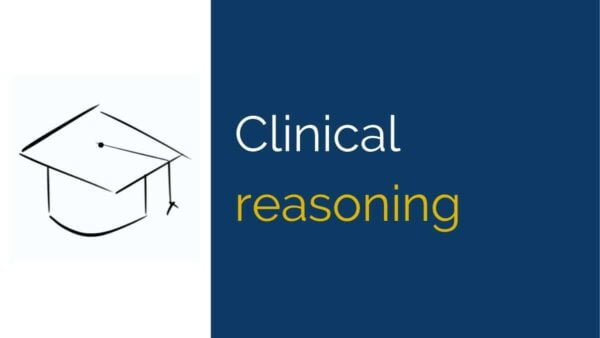Your clinical reasoning is only as good as the information that you feed it!
Getting a clear answer from a patient can be a challenge at times.
You can get vague answers, terminology issues and non-communicators (eg. Every 16 year old male).
It can really lead your clinical reasoning down the wrong path.
Classic replies include
- Non-commital grey answers: “Kinda”, “sort of”, “not really“
- Terminology differences: “there’s no pain, just a sharp stabbing feeling” and “it doesn’t hurt…it aches“
- Non-communicators: PT – “where does it hurt?” Patient – (looks at mum for input)
You know you haven’t got a clear answer but asking again often yields the same results.
So how do you clarify and get a clear response without taking forever to examine them?
Non-commital replies
When the default answer seems to be a vague “kinda“, “not really” or “not sure“, you need more info to help your clinical reasoning.
But repeating the question often gets another vague reply or worse, they pick a yes/no answer just to move on.
For vague replies, here’s the scenario
Physio: How does your knee feel when walking down stairs?
Patient: it’s kinda different…
- Ask them to clarify based on a real event
- PT: when you say “kinda”, did it hurt the last time you walked down stairs?
- Ask the question again with completely different wording
- PT: OK, if you step down a step, would you expect it to hurt?
- Switch to yes/no questions (but be warned, this limits the quality of your answers!)
Terminology differences
This category are occasionally amusing, always perplexing and troublesome for clinical reasoning.
“I don’t get pins and needles, but it tingles”
The danger here is that you’ll get a clear reply to your question but it’s based on their understanding of the terminology.
This can significantly alter your clinical reasoning.
As an example from my very own mother, to an orthopaedic surgeon.
Surgeon: any knee pain?
Mother: No, none at all. (Long pause, surgeon begins to write) There’s a constant ache in the back of the knee though… (surgeon, placing pen down, begins to doubt every previous answer, eyes roll…)
So how to you make sense of answers that may be based on misinterpreted terms?
Don’t offer suggestions and ask them to describe everything.
- Don’t say “do you have pins & needles or numbness”
- Ask “does your leg feel different to normal? How would you describe the feeling?”
- Side note: you still need to specifically clear neuro signs, but ask about pins & needles and numbness AFTER giving them a chance to describe the sensation.
- Don’t say “do you get any pain in the knee?”
- Ask “How does that knee feel different to the other side?”
Non-communicators
This is your classic “trying to get blood from a stone” patient. It’s the stereotypical teenager syndrome, and it’s very real.
It becomes a nightmare for clinical reasoning when no answer is forthcoming.
Typical answers include shrugged shoulders, vague looks and “not sure“.
Asking again or phrasing it differently gets the same response.
So here’s the plan.
- Ask about direct comparisons
- (Palpate both sides, then ask) When I press on your kneecap, does this side (right) feel different to that side (left)?
- Watch for facial expressions and body position
- You’re looking for reactions, looks of concern/apprehension or hand clenching in response to testing
- Ask the parent about info they’ll know best
- They can’t tell you about pain levels or exact locations
- They can be very helpful with noticing a limp, fear avoidance behaviour and how often the patient comments about pain
Take home message
The take home message here is to avoid compromising your clinical reasoning by giving up on chasing answers or taking each response on face value without probing a little deeper.
If you’re not getting clear responses, identify which category your patient matches and try some of the approaches above.
It may seem time consuming but effective communication is the cornerstone of effective treatment.

